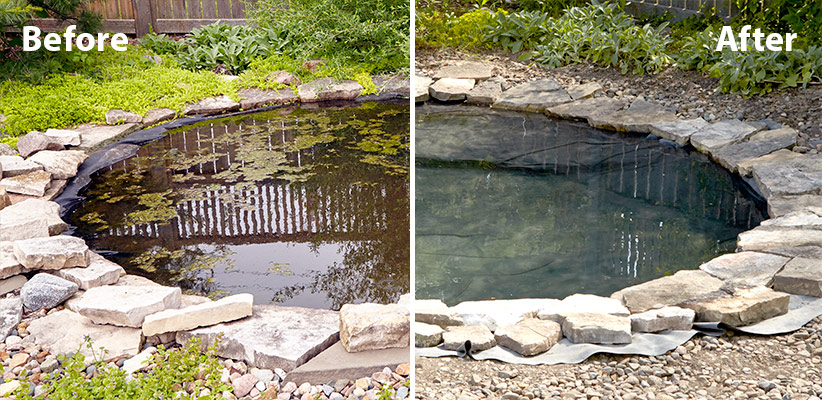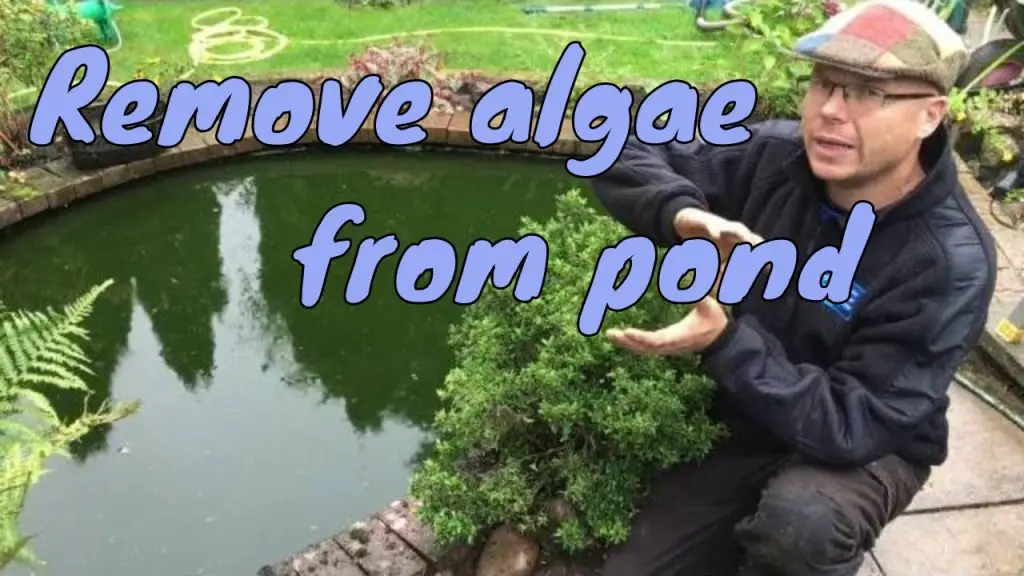Welcome to our guide on cleaning algae in a pond! Algae is a common issue that pond owners face, but with the right strategies and techniques, you can keep your pond clear and healthy. In this article, we will discuss the causes of algae growth, the different types of algae, and most importantly, how to effectively clean algae in a pond.
Understanding Algae in Ponds
Algae are simple, plant-like organisms that thrive in water and sunlight. They can quickly multiply in ponds, turning the water green and creating a murky appearance. There are different types of algae that can grow in ponds, including:
- Green Algae: This is the most common type of algae found in ponds and is responsible for the green water color.
- String Algae: Also known as filamentous algae, this type forms long, hair-like strands that can quickly cover rocks and other surfaces in the pond.
- Blue-Green Algae: This type of algae can be toxic to fish and other aquatic life if left unchecked.

Credit: www.wikihow.com

Credit: www.gardengatemagazine.com
Causes of Algae Growth
Several factors can contribute to the growth of algae in a pond. Understanding these causes can help you take preventive measures to keep algae at bay. Some common causes include:
- Excessive Sunlight: Direct sunlight can promote algae growth in ponds.
- Nutrient Buildup: Excess nutrients like nitrogen and phosphorus can fuel algae growth.
- Poor Water Circulation: Stagnant water provides an ideal environment for algae to thrive.
- Overfeeding Fish: Uneaten fish food can decompose and release nutrients that algae feed on.
Cleaning Algae in a Pond
Now, let’s dive into the steps you can take to effectively clean algae in your pond:
1. Manual Removal
Use a pond net or rake to physically remove excess algae from the water’s surface and sides of the pond. This can help reduce the algae population quickly.
2. Install A Pond Filter
A good quality pond filter can help remove algae particles from the water, keeping it clean and clear. Be sure to choose the right filter size based on your pond’s volume.
3. Add Aquatic Plants
Introducing aquatic plants like water lilies and lotus can help reduce algae growth by competing for nutrients and shading the water, limiting sunlight penetration.
4. Use Barley Straw
Barley straw is a natural algae inhibitor that can be placed in the pond to prevent algae growth. It works by releasing compounds that inhibit algae formation.
5. Adjust Feeding Habits
Feed your fish only the amount they can consume in a few minutes to avoid leftover food decomposing in the water and contributing to algae growth.
6. Consider Uv Clarifiers
UV clarifiers use ultraviolet light to kill algae cells in the water, helping to control algae blooms and keep your pond water clear.
7. Regular Water Testing
Test your pond water regularly for nutrient levels and pH to ensure they are within the optimal range for aquatic life but not promoting algae growth.
Preventing Algae Growth
Prevention is key to keeping algae in check in your pond. Here are some additional tips to prevent algae growth:
- Shade your pond with plants or structures to reduce direct sunlight.
- Avoid overstocking fish to prevent excess waste buildup.
- Perform regular water changes to dilute nutrient levels in the pond.
- Keep debris out of the pond to prevent organic matter from decomposing and adding nutrients to the water.
Conclusion
Algae growth in ponds is a common issue, but with the right strategies and preventive measures, you can keep your pond clean and healthy. By understanding the causes of algae growth, implementing cleaning techniques, and taking preventive steps, you can enjoy a beautiful and algae-free pond all year round.
We hope this guide has been helpful in providing you with the information you need to clean and maintain your pond effectively. Remember, a little maintenance can go a long way in preserving the beauty of your pond and the health of its inhabitants.


